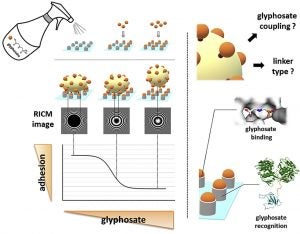Researchers at Leipzig University in Germany say they have developed a quick and simple way of testing for glyphosate in water and food products. The scientific basis of the project is being published in the October 2020 edition of the journal Biosensors and Bioelectronics.
Glyphosate is the active ingredient in Roundup and many other weed killers used for agricultural and residential purposes. It’s been much celebrated by farmers, mainly for its low toxicity to humans and animals, for its facilitation of no-till agricultural methods, and for having a lower impact on the environment than many other compounds. However, it’s also been mired in criticism from the public, thanks in part to a disputed 2015 labeling by the International Agency for Research on Cancer, as well as activism from celebrities such as Food Babe.
“Until now, scientists have used costly laboratory methods to detect glyphosate,” said Professor Tilo Pompe from the Institute of Biochemistry. “The detection principle we have developed uses the natural reaction of glyphosate in plants. By imitating this mechanism, the detection principle is highly specific.”
The corresponding enzyme is bound to a chip surface. During detection, elastic hydrogel microparticles bind to this surface. If glyphosate is present in the detection solution, then depending on the concentration this inhibits the binding of the microparticles to the chip surface.
“By using microparticle binding, the detection method offers an extremely high level of sensitivity with regard to pesticide limits for drinking water,” said Pompe. At the same time, the method could be applied in practice as a simple, mobile detection principle using optical readout procedures.

There are certainly a few ways that simple, mobile detection can impact glyphosate’s use. Activist groups may become hyper-vigilant and use any positive findings of glyphosate on food products as a way to bolster their anti-glyphosate positions. Conversely, a test like this can make it easier to discredit the claims of some groups, like the Moms Across America “study” that argued glyphosate was found in human breast milk, even though no specific research data/methodology was released and it has never been replicated by scientists.
Currently, a patent application has been filed for the detection principle and companies are currently being sought to bring it to market.


